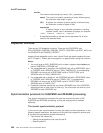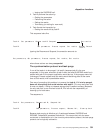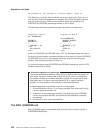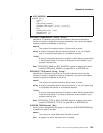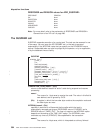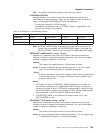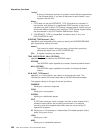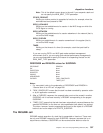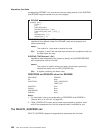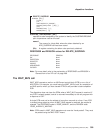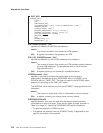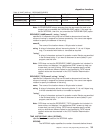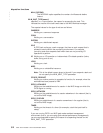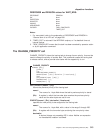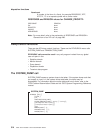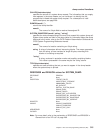
corresponding RESUME. You must ensure that you keep account of the SUSPEND
and RESUME requests issued from your exit program.
RESUME
DFHDSSRX [CALL,]
[CLEAR,]
[IN,
FUNCTION(RESUME),
SUSPEND_TOKEN(name4 | (Rn)),
[COMPLETION_CODE(name1 | (Rn)),]]
[OUT,
RESPONSE(name1 | *),
REASON(name1 | *)]
COMPLETION_CODE(name1 | (Rn))
specifies a user-defined “reason for RESUME” code during suspend and
resume processing.
name1
The name of a 1-byte area to receive the code
(Rn) A register, in which the low-order byte contains the completion code and
the other bytes are zero.
SUSPEND_TOKEN(name4 | (Rn))
specifies a token assigned by the system to identify the SUSPEND/RESUME
pair of operations used on the task.
name4
The name of a location where you have a 4-byte token previously
obtained as output from an ADD_SUSPEND call
(Rn) A register containing the token value.
RESPONSE and REASON values for RESUME:
RESPONSE REASON
OK None
EXCEPTION TASK_CANCELLED
TIMED_OUT
DISASTER None
INVALID None
KERNERROR None
PURGED None
Notes:
1. For more detail, refer to the explanation of RESPONSE and REASON in
“General form of an XPI call” on page 286.
2. ‘TASK_CANCELLED’ means that the task was canceled by operator action
while it was suspended, and that the suspend token is available for use.
The DELETE_SUSPEND call
DELETE_SUSPEND releases a suspend token associated with this task.
dispatcher functions
308
CICS TS for OS/390: CICS Customization Guide



